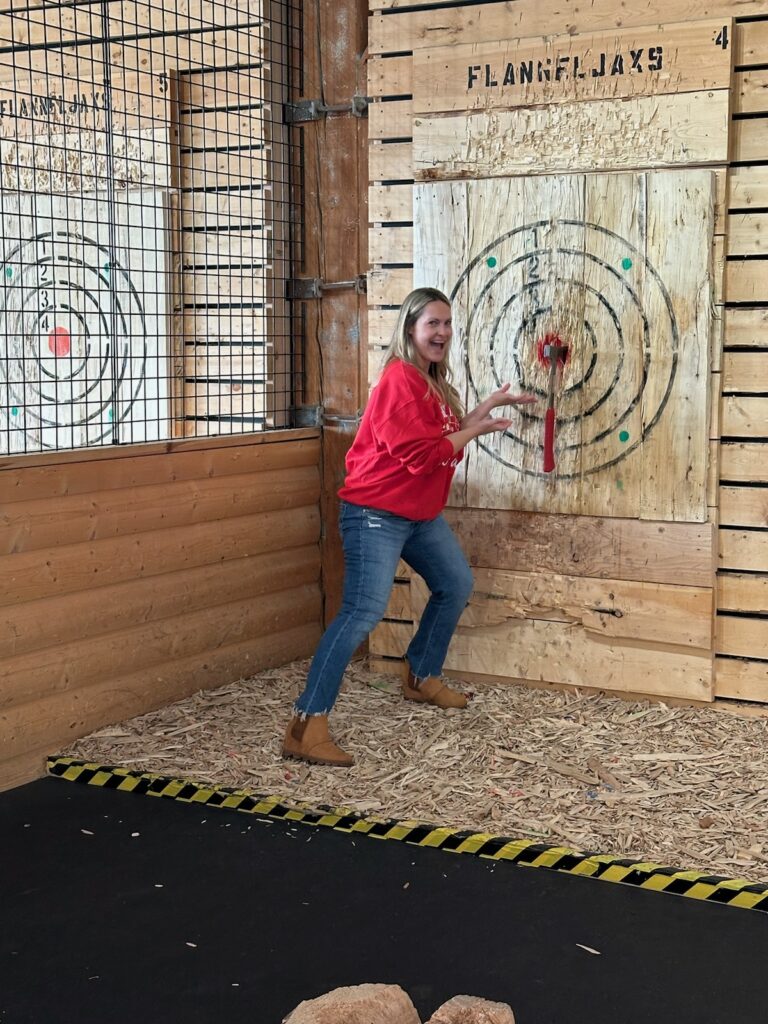By: Dr. Elizabeth Eggert
Axe throwing, an activity with roots deep in human history, has evolved from a practical tool for survival and warfare into a popular and engaging recreational pastime. The origins of axe throwing can be traced back to ancient civilizations where axes were essential for hunting, woodworking, and, when necessary, as weapons in battle.
Historical Significance: Axes as Tools and Weapons
In ancient times, various cultures utilized axes for a multitude of purposes. The Vikings, for example, are often associated with both the craftsmanship of axes for daily tasks and their use as formidable weapons. Similarly, Native American tribes employed tomahawks, a type of light axe, for hunting and ceremonial purposes.
Throughout history, axes have symbolized strength, utility, and craftsmanship, transcending their practical applications. As societies progressed, axes became less vital for survival, transforming into symbols of craftsmanship and resourcefulness.
The Rise of Axe Throwing as a Recreational Activity
The transition of axe throwing from a utilitarian tool to a recreational activity can be attributed to various factors. One of the key elements is the desire for unique and thrilling experiences. As society advanced, people sought unconventional ways to unwind and connect with others, fostering a demand for activities that blended skill, competition, and social interaction.
In recent years, axe throwing has experienced a resurgence, fueled by the rise of urban recreational venues specializing in this novel sport. These establishments offer a safe and controlled environment for participants to channel their inner lumberjack, honing their skills at hitting a target with a carefully thrown axe.
Why Axe Throwing is Popular Today
Several factors contribute to the current popularity of axe throwing:
- Accessible to All Skill Levels: Axe throwing is relatively easy for beginners to pick up, making it an inclusive activity for people of all ages and fitness levels.
- Social and Competitive Element: The sport combines elements of both social and competitive activities. Whether enjoying a casual night out with friends or participating in a structured league, axe throwing provides an opportunity for camaraderie and friendly competition.
- Stress Relief and Catharsis: The act of throwing an axe can be cathartic, offering a unique way for individuals to release stress and tension. The rhythmic motion of axe throwing provides a satisfying physical and mental release.
- Novelty and Trendiness: The novelty of axe throwing, combined with its historical roots, contributes to its trendiness. People are drawn to experiences that stand out from traditional recreational activities.
- Safe and Controlled Environment: Modern axe-throwing venues prioritize safety, providing participants with thorough training and safety guidelines. This ensures that individuals can enjoy the activity without unnecessary risks.



The history of axe throwing is a journey from practicality to recreation. Today, it has found a place in the hearts of enthusiasts seeking a unique, social, and thrilling experience, turning what was once a survival skill into a modern pastime that continues to captivate people around the world.
